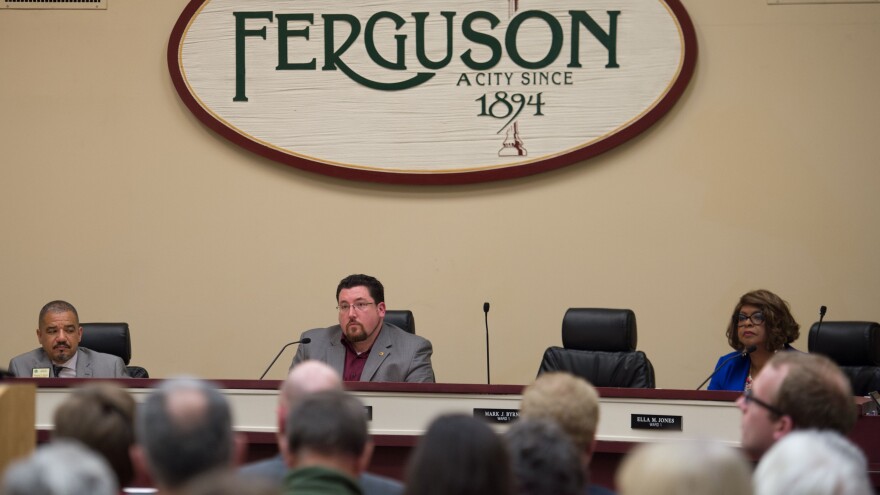A $15,000 Bill for Stealing $8 in Mascara:
Another Little-Known Way to Victimize the Poor
Who’s Asking Black Parents About Race Theory?
In Defense of Kamala Harris, Despite Coverage
‘Greatest Generation’ Included Racists
Opioid Use by People of Color Needs Attention
Gail Berkley-Armstrong, Bay Area ‘Institution,’ 74
New Yorkers Can Search Police Disciplinary Records
Inquirer Found Philly Woman’s Biological Mother
Slaveholders’ Names Still on Chicago Schools
AP Race Team Reflects on 2021
10 Most Viewed Journal-isms Columns of 2021
Mary Alice Jervay Thatch Dies, N.C. Black Publisher
Short Takes: Washington Informer; Black women’s underrepresentation on cable news; exposing air pollution in Florida cane fields; Hugo Balta and LatinX term; misuse of last name in reporting on Hispanics; Sandra M. Clark; Mireya Villareal; Laurie Ochoa and CCNMA; suspects in Kevin Nishita fatal shooting; Liz Walker; Mike McCray and Erik Horne; A. Sherrod Blakely; New York Amsterdam News; “
“A Journal for Jordan” at box office; historic news collaborative among Oklahoma Native Americans; radical change in the Afghan media landscape; news outlet’s payment of ‘financial remedies’ to Meghan Markle; shutdown of Hong Kong pro-democracy website; Canada’s Mary Ann Shadd Cary; Palestine cause at center of international news cycle; in Africa, interrupting cycle of COVID misinformation; Uganda’s awards for covering COVID; Argentinan newspaper office burned.
Support Journal-isms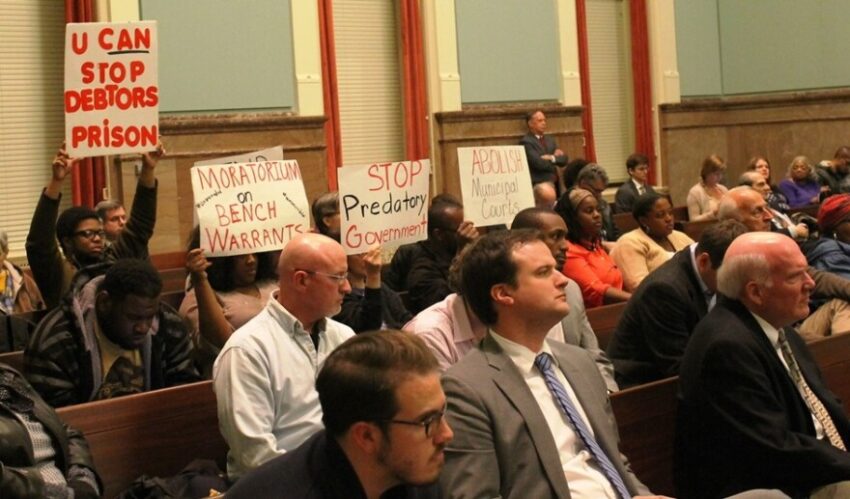
/
Another Little-Known Way to Victimize the Poor
A year after the national uproar over the 2014 police killing of 18-year-old Michael Brown in Ferguson, Mo., the Justice Department found that the Ferguson Police Department and the city’s municipal court engaged in a “pattern and practice” of discrimination against African Americans. They were targeted disproportionately for traffic stops, use of force and jail sentences.
Tony Messenger was editorial page editor then of the St. Louis Post-Dispatch, with Ferguson in its circulation area.
Now, Messenger is a Post-Dispatch metro columnist, and has authored a new book that reports that the “pattern and practice” takes place not only in Ferguson. Nor are African Americans the sole group affected.
 “The reporting is on the national scope of the various ways we criminalize poverty, primarily for jailing people for their inability to pay fines and fees,” Messenger (pictured) told Journal-isms.
“The reporting is on the national scope of the various ways we criminalize poverty, primarily for jailing people for their inability to pay fines and fees,” Messenger (pictured) told Journal-isms.
“What is particularly new since Ferguson is the ‘pay-to-stay’ phenomenon, where poor people are jailed for their inability to pay for ‘board bills’ or bills for previous stays in jail.
“I think what is key to the book is understanding how all these flawed elements of the criminal justice system really disadvantage poor people, and particularly people of color.”
Wriote Washington Post reviewer Mark R. Rank, “Rather than providing support to the poor, U.S. social policies appear designed to punish and stigmatize them. Nowhere is this more clear than in Tony Messenger’s book, ‘Profit and Punishment: How American Criminalizes the Poor in the Name of Justice.’ “
Messenger writes that seasoned St. Louis lawyers could not believe it when he described what was happening. “These are not the kind of stories you see in a typical Law and Order episode.”
On C-SPAN, Messenger told host Pedro Echevarria (video below), “One of the main characters is a woman named Brooke, who lived in a small, rural county in the central part of the state.
“Brooke stole an 8 dollar tube of mascara from Walmart. She ended up involved in the criminal justice system and over a period of time, she ended up serving a year in the county jail for that shoplifting, and then got out of jail and owed $15,000 in a bill for her time in jail.
“One of the things a lot of people don’t understand is that a lot of jails charge you for your time in jail, just like a hotel bill. Anywhere between $5 or $10 or $50 or more per day.
“Here is this poor woman who stole an $8 tube of mascara, which is not good. You should not shoplift. Stealing is bad and there are laws against that.
“She served a harsh punishment, a year in jail. But that was not the end. She did her time for her crimes and then got a $15,000 bill. What the judge did was, the judge required her to come back to court every month and either say, ‘Hey, here is the money that I have this month from my minimum-wage job to pay down that $15,000 debt that I’m never going to be able to pay off.’
“And if she missed a court date or was not able to make a payment, the judge threatened her with more jail time. And that sort of thing happens all over the country. It is astounding to me.”
Rank, who reviewed the book, is the Herbert S. Hadley professor of social welfare at Washington University in St. Louis and a co-author of “Poorly Understood: What America Gets Wrong About Poverty.”
He wrote, “The good news is that as a result of reporting by journalists such as Messenger and the work of community activists, cities and states across the country have begun to change some of their policies . . . but as Messenger correctly points out, there is still a long way to go before justice is not dependent on the size of one’s wallet.”
- Fines and Fees Justice Center: Not Just a Ferguson Problem: How Traffic Courts Drive Inequality in California (2015)
- Rachel Lippmann, St. Louis Public Radio: Municipal Courts Are Less Of A Cash Cow Five Years After Ferguson, But Problems Remain (Aug. 6, 2019)
Who’s Asking Black Parents About Race Theory?
Who knew?
“According to a poll published in September, a staggering 83 percent of parents support the teaching of ‘critical race theory’ in schools,” Kali Holloway (pictured below) wrote Wednesday for The Nation.
“Or to be more specific — because they are never granted modifier-free descriptors, as their white peers are — 83 percent of Black parents are in favor of CRT in their children’s schools. In a USA Today/Ipsos poll, 71 percent of Asian parents and roughly 60 percent of Hispanic parents said CRT should be part of the curriculum in their children’s schools.”
 Holloway continued, “A Fox News survey conducted in Virginia — the state that is home to the Loudoun County School District, where some of the most visible battles over CRT have taken place — revealed that among Black parents with more than a passing familiarity with CRT, more than twice as many approved of it as opposed it. These polls didn’t specify to parents that critical race theory is a 40-year-old legal framework for analyzing the ways racism is embedded in American institutions, [and] not a lesson plan that’s actually used in K-12 classrooms today.
Holloway continued, “A Fox News survey conducted in Virginia — the state that is home to the Loudoun County School District, where some of the most visible battles over CRT have taken place — revealed that among Black parents with more than a passing familiarity with CRT, more than twice as many approved of it as opposed it. These polls didn’t specify to parents that critical race theory is a 40-year-old legal framework for analyzing the ways racism is embedded in American institutions, [and] not a lesson plan that’s actually used in K-12 classrooms today.
“But we can assume that those parents regard CRT as a concept that includes the study of slavery and anti-Black racism and support teaching those topics in our schools. In a small poll of parents of New York City schoolchildren, a group that is more than 80 percent people of color, over three-quarters of respondents supported the idea that students should learn about the ‘damages of white supremacy,’ while 79 percent supported teaching about the Black Lives Matter movement.
“The fact that Black and other nonwhite parents — that is to say, those parents whose kids make up the majority in America’s public school classrooms — believe that the perspective provided by CRT would enrich their children’s education seems newsworthy at a moment in which the battle over school lesson plans is raging. And yet, since a false characterization of CRT became fodder for conservative hysteria just over a year ago, there’s been almost no media coverage examining Black parents’ feelings about CRT in schools.
“Instead, the white backlash has been given center stage. . . .”
Separately, writing Wednesday in the Philadelphia Inquirer, Linn Washington Jr. contended that “The campaign against critical race theory, at its core, seeks exclusion of information, especially instruction about racism and racism’s historical damages across American society.
“Journalism in America, however, has a constitutional responsibility to present information to the public. That responsibility includes information about the realities of racism that critical race theory opponents dismiss. The founders of the United States believed the ‘informed electorate’ essential for democracy is undermined without information from a free press. . . .”
The observation from founding father Benjamin Franklin that “an investment in knowledge pays the best interest” holds as much value for newsrooms as it does classrooms, Washington wrote.
- Gillian Brockell, Washington Post: Why Christmas was the best time of year to escape slavery (Dec. 24)
- Jonathan M. Pitts, Baltimore Sun: New book challenges old ‘myths’ about Maryland’s role in the Civil War
- Juliana Feliciano Reyes, Philadelphia Inquirer: Efforts to ban books are on the rise. Philly YA authors say ‘silent censorship’ is also getting worse
- Sydney Trent, Washington Post: The Black people who lived in Walden Woods long before Henry David Thoreau (Nov. 28)
On his radio show, Charlamagne Tha God asks Kamala Harris ‘who the real president’ is (video)
In Defense of Kamala Harris, Despite Coverage
“The office of the vice president of the United States is under siege these days,” David Rothkopf wrote Dec. 17 for the Daily Beast.
Rothkopf is a foreign affairs analyst and columnist for USA Today and the Daily Beast. He argues, for “Americans still trying to get to know Harris, the recent tsunami of press coverage about her has not been much help. Setting aside the silly feeding frenzy stories, even more ‘in-depth’ pieces have offered more heat than light.”
According to the latest FiveThirtyEight polling average, a large number of voters are not satisfied with how Harris is conducting her role as vice president,” The Hill reported.
“As of late December, 47 percent of registered voters said they disapprove of her job in office, compared with just 39 percent who approve.”
Rothkopf questioned media motives. “Is this in spite of the fact that Kamala Harris has already had a historically significant political career? Or is it because of it? Is it in spite of the fact that the 57-year-old is heir apparent to the oldest president in American history, or because of it? Is it in spite of or because of the fact she is a woman of color who has ascended to an unprecedented level in a country in which politics has, since the beginning, been dominated by white men?
“Is she really ‘difficult’? Is there really ‘just something about her’ people don’t like? Or do these critiques have a familiar ring about them because they are the darts of choice the political patriarchy uses to attack women in positions of power?”
Rothkopf continued, “What we do know is this: Vice President Harris has recently been subject to a degree of press scrutiny that is unequaled by any modern holder of the office who was not also the architect of an illegal war and a proponent of torture who also happened to shoot one of his friends in the face with a shotgun. The media attacks on her have ranged from the absurd — critiquing her for her choice of a souvenir on a recent trip to France or for a ‘Bluetooth phobia’ that was actually just a sound security precaution — to whisper-fueled analyses of her management style that fail the laugh test when set alongside the behavior of men in top jobs or her level of achievement throughout her career.
“These pieces have come despite a first-year track record that is impressive, substantive, and wide-ranging. Indeed, upon examination, Kamala Harris is enjoying a very Biden-like vice presidency. Like the president, she has ignored the inside-the-Beltway buzz from a D.C. press corps going through a bad case of withdrawal after the never-a-dull-moment train wreck of the Trump years. And, like the man she works alongside, she has kept her head down and done her job.
“Few areas reveal her successes and strengths as clearly as how she has handled her broad foreign policy portfolio. While she has not received credit for much of what she has done in this area, she has been undaunted, working with a methodical intensity that has won admirers around the world and among her closest colleagues. . . .”
- Adam B. Coleman, Newsweek: Kamala Harris Is a Diversity Hire
- Amie Parnes and Hanna Trudo, The Hill: Democrats like what they saw in Harris-Charlamagne tha God exchange (Dec. 25)
- Randall Yip, AsAmNews: Is Vice President Harris being judged unfairly?
‘Greatest Generation’ Included Racists
“In August 1944, an American soldier finishing up an Army survey was asked whether he had any further remarks. He did,” Michael E. Ruane wrote Dec. 20 in The Washington Post.
“ ‘White supremacy must be maintained,’ he wrote.
“ ‘I’ll fight if necessary to prevent racial equality. I’ll never salute a negro officer and I’ll not take orders from a negroe. I’m sick of the army’s method of treating …[Black soldiers] as if they were human. Segregation of the races must continue.”
“Another soldier wrote: ‘God has placed between us a barrier of color … We must accept this barrier and live, fight, and play separately.’
“These harsh views, and others, from the segregated Army of World War II, emerge in a new project at Virginia Tech that presents the uncensored results of dozens of surveys the service administered to soldiers during the war.
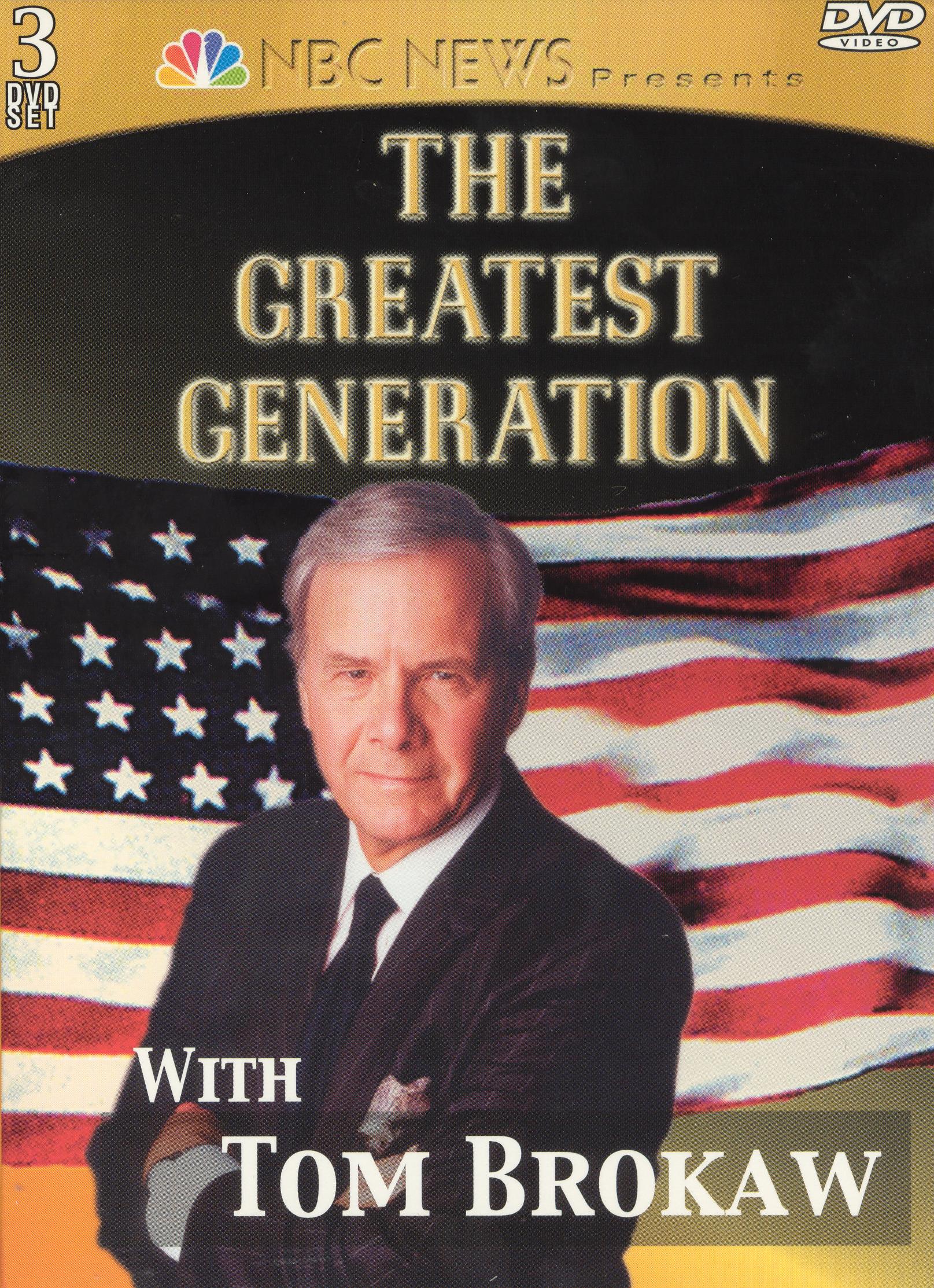 ” ‘Much of the material is being placed on the Internet for the first time, and a lot of it runs counter to the wholesome image of the war’s “greatest generation.” ‘
” ‘Much of the material is being placed on the Internet for the first time, and a lot of it runs counter to the wholesome image of the war’s “greatest generation.” ‘
NBC did not provide a response from its longtime anchor, Tom Brokaw, whose veneration of the “Greatest Generation” resulted in best-selling book and other media success (pictured).
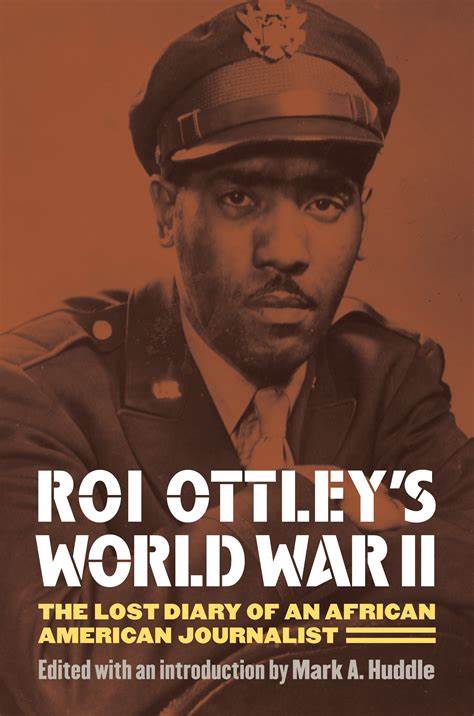 But Roi Ottley, one of the few Black journalists to cover World War II for a mainstream newspaper, was writing about such racism at the time.
But Roi Ottley, one of the few Black journalists to cover World War II for a mainstream newspaper, was writing about such racism at the time.
As this column noted in 2013, reporting on Mark A. Huddle’s “Roi Ottley’s World War II: The Lost Diary of an African American Journalist” (pictured):
“The noose of prejudice is slowly tightening around the necks of American Negro soldiers, and tending to cut off their recreation and associations with the British people,” the 1944 story begins. “For — to be frank — relations between Negro and white troops have reached the proportions of grave concern . . . in essence, there are those here who are still fighting the Civil War — this time on British soil.”
- Charlie Horse Productions: Invisible Warriors: African American Women in World War II
- Dana Hedgpeth, Washington Post: Film honors African American women who were ‘Rosie the Riveters’ during World War II
- Kat Stafford and James Laporta, Associated Press: Decades of DOD efforts fail to stamp out bias, extremism
- Voces Oral History Center, University of Texas at Austin, Moody College of Communication: Stories with interview subjects from our World War II collection.
Opioid Use by People of Color Needs Attention
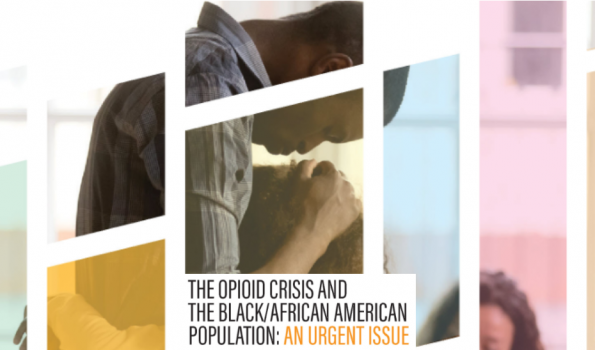 “People of color were less likely than their white counterparts to be prescribed opioids in the 1990s after they became widely available for non-cancer-related pain — but although those rates caught up by the mid-2000s, media reports tended to focus on prescription opioid use among white people, a study released earlier this month says,” Meera Jagannathan reported Wednesday for Marketwatch.
“People of color were less likely than their white counterparts to be prescribed opioids in the 1990s after they became widely available for non-cancer-related pain — but although those rates caught up by the mid-2000s, media reports tended to focus on prescription opioid use among white people, a study released earlier this month says,” Meera Jagannathan reported Wednesday for Marketwatch.
“ ‘To the extent that we think opioids were overprescribed, the media has put most of its attention on whites,’ Virginia Chang, an associate professor of social and behavioral sciences at the NYU School of Global Public Health, told MarketWatch.
“But the study, published in the American Journal of Preventive Medicine, shows that Black people were eventually using prescription opioids to a similar degree as white people. . . .”
- Keturah James and Ayana Jordan, The Journal of Law Medicine & Ethics: The Opioid Crisis in Black Communities (June 2018)
- Marc R. Larochelle, MD, MPH, Svetla Slavova, Ph.D., Elisabeth D. Root, Ph.D., Daniel J. Feaste, Ph.D., Patrick J. Ward, Ph.D., MPH, Sabrina C. Selk, ScD, Charles Knott, American Journal of Public Health: Disparities in Opioid Overdose Death Trends by Race/Ethnicity, 2018–2019, From the HEALing Communities Study (October 2021)
Data reporter Sean Lahman shows how to use the New York Police Disciplinary Records Database. (Credit: Shawn Dowd/Democrat and Chronicle)
New Yorkers Can Search Police Disciplinary Records
“Today, every USA TODAY Network news organization in New York state proudly publishes a searchable database of police disciplinary records we’ve obtained from departments across the state under the state’s Freedom of Information laws,” Michael Kilian, New York state editor for the USA Today Network and executive editor of the Democrat and Chronicle in Rochester, N.Y., wrote Dec. 6.
“Go ahead, take a look. You can find the records at data.democratandchronicle.com/new-york-police-disciplinary-records.
“Sadly, a significant number of police departments large and small have failed to follow the law and release their disciplinary records. Only 90 police departments out of several hundred have taken steps to fulfill their legal obligations and share these documents.
“To those departments that haven’t complied, we pledge to join other parties in making the legal case for disclosure of the documents as the law intends. When police disciplinary records see the light of day, it is an affirmation that no public agency is above the law, including law-enforcement entities that enforce the law. . . .”
- Nathan Solis, Los Angeles Times: Days before new law, court blocks Inglewood from destroying police disciplinary records
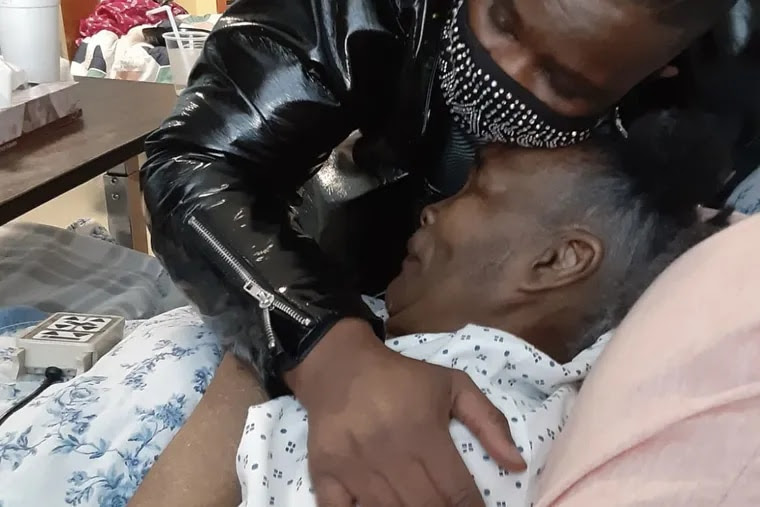
Inquirer Found Philly Woman’s Biological Mother
“In June, The Inquirer told Cheryl Edwards’ story of being abandoned at birth in West Philadelphia in 1967,” the Philadelphia Inquirer said Wednesday.
“As a result of the story, Edwards found her biological family and The Inquirer detailed their meeting in a follow-up story in October. Today, Edwards writes in her own words about meeting her biological mother for the first time in December.”
“This year has been the most rewarding and fulfilling year of my entire life. This year, something I never believed would happen did.
“This year, I met my biological mother.
“On Aug. 14, 1967, I was abandoned as a newborn in West Philadelphia. I was put inside of a pillowcase and hidden under a dresser in an empty room of an otherwise occupied rowhome.
“Through a series of events, which I learned about from newspaper articles at the time, the pillowcase — with me inside of it — was placed into a trash bin behind the house on Haverford Avenue by one of the residents, George Ikard.
“A neighbor saw this, pulled the pillowcase from the trash, and found me inside. I was taken to a hospital, placed in foster care, and later adopted by a loving couple, Ernest Lee Sr. and Susan Edwards. They loved and cared for me as if I was their own biological child.
“This year, I decided to tell my story for two reasons. One, because during an argument, someone very close to me maliciously stated, did I even know who my biological parents were; and the other reason is because I had experienced so much loss of friends and family due to COVID that I sought out grief counseling through my employer. In those sessions, the therapist suggested I discuss my childhood.
“After a bit of hesitation, I agreed to open up and share it with her. She listened very intently and was very quiet. I felt vulnerable, but I also felt like I could trust her. After I finished speaking I felt a slight sense of relief and she said to me, ‘You should tell your story. It will take the sting out of the horrific circumstances.’ . . .”

Slaveholders’ Names Still on Chicago Schools
“When the top Chicago Public Schools official for racial equity learned that CPS had 30 schools named for slaveholders, his immediate reaction was surprise and outrage,” Lauren FitzPatrick reported Dec. 23 for the Chicago Sun-Times.
“ ‘It’s dehumanizing, and it’s something that we have to work on and change,’ Maurice Swinney said when presented with the Chicago Sun-Times findings, acknowledging that he hadn’t known how many school names were linked to slavery. ‘And we got to disrupt it, we got to stop it, we got to change it.’ “
FitzPatrick then wrote, “That was one year ago.
“Since then, one Chicago school with a name linked to slavery has shed its slaveholder namesake. And the Board of Ed has yet to be presented with the rules change that Swinney, who since has been promoted to CPS interim chief educational officer, said would come months ago. . . .”
- Colin Deppen, Spotlight PA: Pennsylvania revises historical Confederate markers, recasts forces as ‘enemy’ soldiers (Dec. 19)
- Editorial, Pittsburgh Post-Gazette: Marking history requires delicacy, not ideology
- Mark Scolforo, Associated Press: Racial reckoning turns focus to roadside historical markers
AP Race Team Reflects on 2021
“After 2020 became a year of racial reckoning with the public killing of George Floyd and the protests of injustices against Black people, 2021 offered what can best be described as a follow-up year — a continuation of some familiar story threads with other new ones emerging,” the Associated Press wrote on Dec. 20.
The story also said, “Against this backdrop, AP’s Race and Ethnicity team tried to capture the story both in sweep and in painstaking detail. Here, some AP journalists from that team involved in the coverage reflect on some of the year’s stories and how journalism handles the coverage of race.”
Kat Stafford, AP national investigative race writer:
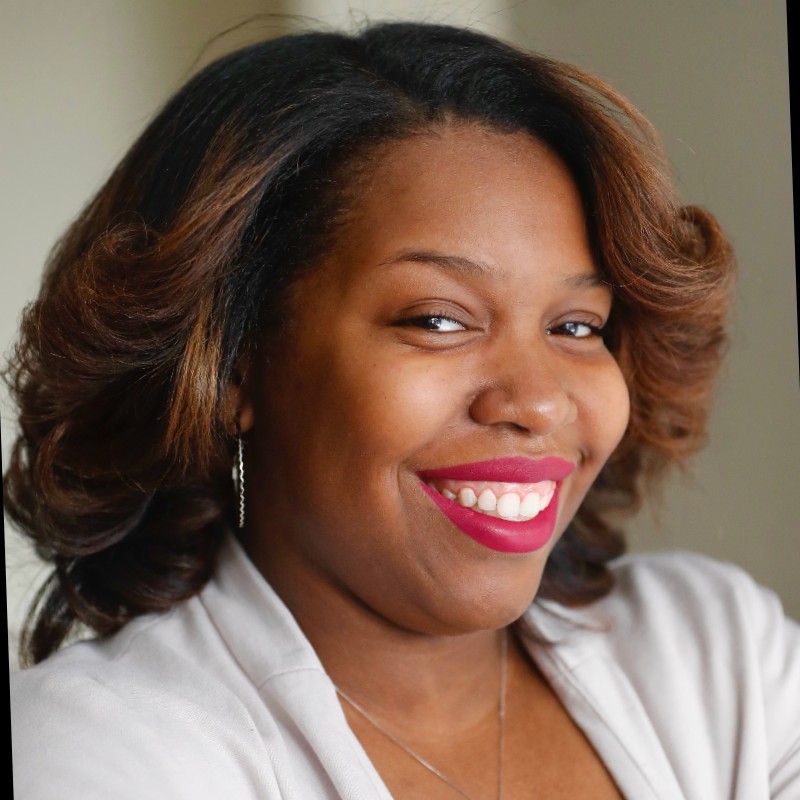 “I feel as if 2021 was really a continuation of everything that we dealt with in 2020. Race is still the story. It is still that constant through line to a lot of the issues that we have been covering. … This country right now is at a place where people are demanding that we talk more frankly about the role of structural and systemic racism and how that has led to all of these inequities that really cross over into every single beat that we cover here at AP. So that’s been what I’ve been reflecting on — how racism is at the forefront of all of these issues. And it’s not going away anytime soon. . . .”
“I feel as if 2021 was really a continuation of everything that we dealt with in 2020. Race is still the story. It is still that constant through line to a lot of the issues that we have been covering. … This country right now is at a place where people are demanding that we talk more frankly about the role of structural and systemic racism and how that has led to all of these inequities that really cross over into every single beat that we cover here at AP. So that’s been what I’ve been reflecting on — how racism is at the forefront of all of these issues. And it’s not going away anytime soon. . . .”
Terry Tang, AP race and ethnicity reporter:
 “What kind of sticks out in my mind is the Gabby Petito case, how it brought back around that whole conversation about missing white woman syndrome. And are we as one of multiple news organizations doing enough to cover the nonwhite victims in those kinds of cases? That’s something that I was sort of reexamining. I’m glad that I got to help out on the story about that issue, where a few of us went out and tried to find family members of missing persons of color and give them a chance to speak. So I was grateful to be able to do that, and give a couple of families a platform. So that’s something that I’m going to try to remember in the future is how can we address those gaps so it’s not just the white high-income person who’s getting attention. . . .”
“What kind of sticks out in my mind is the Gabby Petito case, how it brought back around that whole conversation about missing white woman syndrome. And are we as one of multiple news organizations doing enough to cover the nonwhite victims in those kinds of cases? That’s something that I was sort of reexamining. I’m glad that I got to help out on the story about that issue, where a few of us went out and tried to find family members of missing persons of color and give them a chance to speak. So I was grateful to be able to do that, and give a couple of families a platform. So that’s something that I’m going to try to remember in the future is how can we address those gaps so it’s not just the white high-income person who’s getting attention. . . .”
Andale Gross, AP race and ethnicity editor and team leader:
 “One thing we will obviously keep an eye on going into this next year is those issues that we know are going to be at the forefront, whether it’s voting rights, particularly with the Black and Latino vote, but obviously other groups as well; whether it’s looking at law enforcement in have things changed? Are there some signs of reform? Is there any kind of indication or signaling there’ll be some progress? . . .
“One thing we will obviously keep an eye on going into this next year is those issues that we know are going to be at the forefront, whether it’s voting rights, particularly with the Black and Latino vote, but obviously other groups as well; whether it’s looking at law enforcement in have things changed? Are there some signs of reform? Is there any kind of indication or signaling there’ll be some progress? . . .
“We’re definitely talking about race more, and it’s definitely more front and center than it has been in decades past. Where we really need to improve is everybody kind of settling down and putting aside their perspective on the race situation and then hearing it from other people’s perspectives and assessing all sides. There’s so much emotion on both sides. Obviously, there’s more than two sides, but on all these different ends of it there’s so much emotion involved. That’s when things just become more agitated, and politicized and even more divisive. It’s messy. It’s complicated. But I think people are now more willing to at least address it. . . .”
- David Bauder, Associated Press: Outlets Hurt By Dwindling Public Interest In News In 2021
- Joyce Ferriabough Bolling, Boston Herald: Separating the givers from the Grinches this season (Dec. 22)
- Brandon Contes, Mediaite: Mediaite’s Most Influential in Sports Media 2021
- Mary C. Curtis with Charles M. Blow, “Equal Time with Mary C. Curtis,” Roll Call: The politics of equity 2021 (podcast) (Dec. 16)
- Lee Hill, Sarah Bahr, James Wong, Mica Soellner and Anthony Noto, Muck Rack: Journalism predictions for 2022: 5 industry pros weigh in (Dec. 22)
- Cecily Hilleary, Voice of America: Native American Journalists Weigh in on Biden Tribal Initiatives
- Sofia Koyama, Daniella Ignacio and Jessica Xiao, Asian American Journalists Association: AAJA’s 2021 End of Year Top 10 Lists
- Bry’onna Mention, Essence: Best of 2021: The Most-Read News Stories of the Year
- Clarence Page, Chicago Tribune: There were many dubious achievements in 2021. Here are my awards (Dec. 24)
- Charles Robinson, Maryland Black politics blogger: Top Ten Black New Stories of 2021
10 Most Viewed Journal-isms Columns of 2021
- 1. Atlanta Voice Editor Found Dead (March 10) (5,687 views)
- 2. Who Was Bernadette? Who Was Mrs. Jones? (May 3) (4,854 views)
- 3. Bryan Monroe, Industry Leader, Dies at 55 (Jan. 13) (3,906 views)
- 4. Was His Excuse Really, ‘We’re Not Woke’? (Feb. 6) (3,562 views)
- 5. White House Press Aide Suspended in Fallout From Affair/ Update: White House Press Aide Resigns/ Update: Alexi McCammond Not Returning to Biden Beat/ (Feb. 12-14) (3,541 views)
- 6. ‘Collective Hug’ Over Bryan Monroe (Jan. 17) (3,486 views)
- 7. News Guild Links Capitol Siege With Media Literacy, Newsroom Cuts and Racism (Jan. 10) (3,485 views)
- 8. Santorum Insult Inflames Native Americans (April 30) (3,291 views)
- 9. Media Version of Juneteenth’s Origin Is a Myth (June 19) (3,205 views)
- 10. Jackie Jones Named Morgan J-School Dean (June 15) (3,116 views)
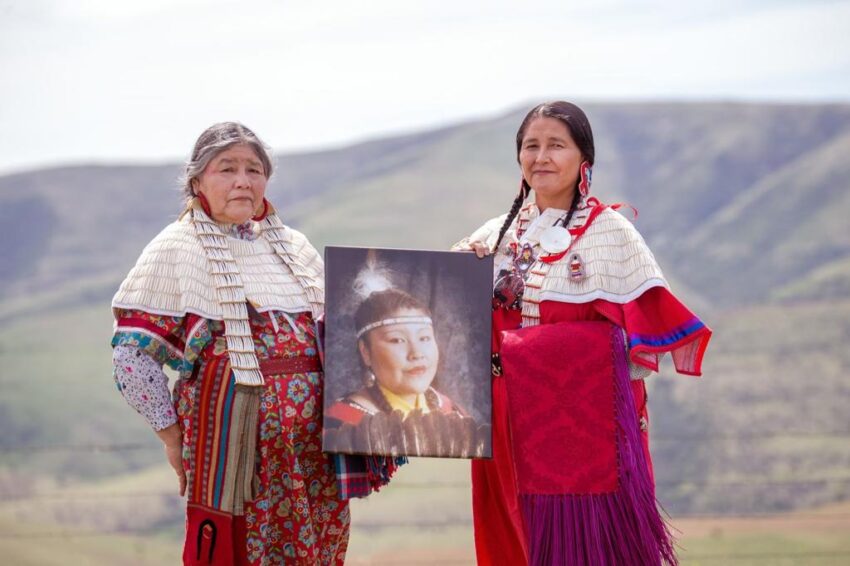
Needed: Media Focus on Missing Native Women
While the recent mainstream media coverage of Gabby Petito, “a White woman killed by strangulation while on a cross-country road trip with her fiancé, was ramping up, there were developments in several cases involving Indigenous women that didn’t receive any national interest,” Carina Dominguez wrote Dec. 11 for Indian Country Today.
In a 5,100-word exploration of the legal, media and other aspects of the issue, Dominguez wrote, “Nicole Wagon, Northern Arapaho, lost two of her daughters, Jocelyn Watt and Jade Wagon, a year apart and she says both cases remain unsolved. The sisters from Wyoming didn’t receive anything like the same amount of media attention Petito did and Nicole Wagon believes it would have made a drastic difference in both cases.”
She noted that the Bureau of Indian Affairs has announced a new website that it says can be a tool to bring attention to unresolved Indigenous cases.
One study found the Indigenous homicide rate in the U.S. and Canada is the highest of any racial group in either country, and “for Indigenous women the homicide rate is 10 times higher than it is for White women, according to the Department of Justice.”
Even Joseph Petito, Gabby’s father, urged the media to cover all missing people with the same energy they gave his daughter.
“I want to ask everyone to help all the people that are missing and need help. It’s on all of you, everyone that’s in this room to do that,” Petito said while pointing to reporters and cameras in front of him. “If you don’t do that for other people that are missing, that’s a shame, because it’s not just Gabby that deserves it.”
Mary Alice Jervay Thatch Dies, N.C. Black Publisher
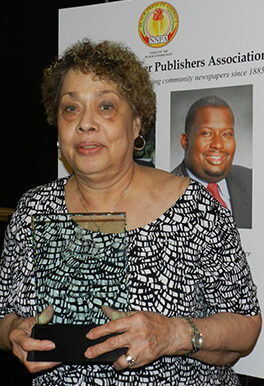 “Mary Alice Jervay Thatch, the third-generation editor and publisher of a historic Black newspaper in North Carolina and a driving force behind the pardons of the Wilmington 10, has died,” the Associated Press reported.
“Mary Alice Jervay Thatch, the third-generation editor and publisher of a historic Black newspaper in North Carolina and a driving force behind the pardons of the Wilmington 10, has died,” the Associated Press reported.
“She was 78. Thatch died Tuesday at Duke University Hospital in Durham, but a cause of death was not available, according to her cousin, Paul R. Jervay Jr., who considered her a ‘human dynamo.’ Thatch was the daughter of Thomas C. Jervay Sr., the publisher of The Wilmington Journal. Her grandfather, printer R.S. Jervay, started the newspaper as the Cape Fear Journal in 1927, decades after a mob of white supremacists burned The Daily Record, the African American newspaper, to the ground in the 1898 Wilmington Massacre.
“Thatch’s father was an activist-journalist with his ‘heart and soul’ devoted to the community, Jervay said Wednesday. Thatch carried on her father’s legacy when she succeeded him in 1996. She took on the fight for pardons for the Wilmington 10, nine Black men and one white woman wrongly convicted for the 1971 firebombing of a grocery store. In 2012, outgoing Gov. Beverly Perdue issued pardons of innocence for the group.
The N.C. Black Newspaper Publishers Association added, “In 2012, Mrs. Thatch led a team of black journalists, attorneys and activists in uncovering proof that the Ten were originally framed. She also led a campaign that garnered over 150,000 petition signatures asking then Gov. Beverly Perdue to grant pardons of innocence to the Ten.”
- George E. Curry, National Newspaper Publishers Association: Mary Alice Thatch: From ‘Janitor’ to NNPA Publisher of the Year (July 10, 2013)
Gail Berkley-Armstrong, Bay Area ‘Institution,’ 74
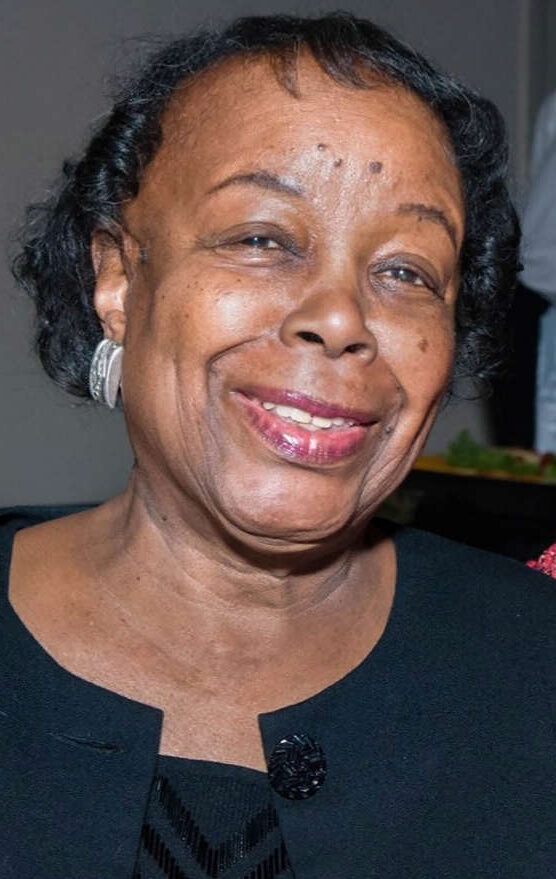 “Well-known Bay Area journalist Gail Berkley-Armstrong (pictured) has died, her former employer confirmed,” Keith Burbank reported Friday for Bay City News. “Berkley-Armstrong, the daughter of late Oakland attorney and Oakland Post founder Thomas L. Berkley, was 74. She died Sunday after a lengthy illness.
“Well-known Bay Area journalist Gail Berkley-Armstrong (pictured) has died, her former employer confirmed,” Keith Burbank reported Friday for Bay City News. “Berkley-Armstrong, the daughter of late Oakland attorney and Oakland Post founder Thomas L. Berkley, was 74. She died Sunday after a lengthy illness.
“Berkley was the editor of the Sun-Reporter newspaper in San Francisco for 16 years following 32 years as her father’s assistant at the Oakland Post. After her father died, the paper was sold in 2004 to Paul Cobb.
” ‘Gail was an institution in Bay Area journalism,’ Rep. Barbara Lee said in a statement. ‘She wrote about and lifted up the Black community for decades, including as the editor of the Oakland Post and most recently at the Sun-Reporter. . . .
” ‘She was a voice for our community. One of her many accomplishments was the sister city agreement between Oakland and Sekondi-Takoradi in Ghana, which helped to provide fresh water and sanitation to children there,’ she said. ‘My heart is with everyone who is mourning this loss today. May she rest in peace and power.’ . . .”
Short Takes
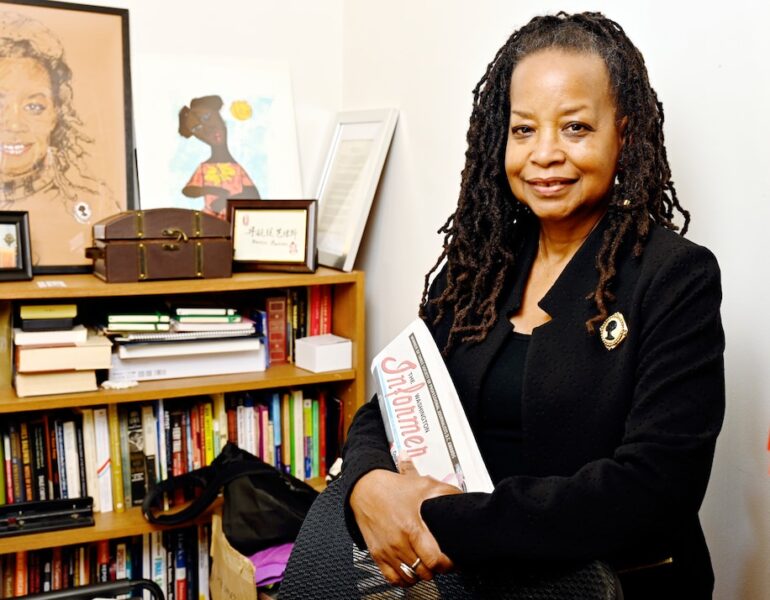
- In the past five years, the Washington Informer, “which is focused primarily on the region’s Black community, has been undergoing an impressive expansion. Readership for the D.C.-based weekly has nearly doubled to roughly 50,000,” Courtland Milloy wrote Tuesday for the Washington Post. “Unlike some local newspapers, which have shrunk to the size of a supermarket supplement, the Informer has grown from an average 36 pages per issue to 56 pages.” Publisher Denise Rolark Barnes wrote Wednesday on LinkedIn, “When I arrived in the office today, the phones were ringing off the hook from folks requesting subscriptions and asking how to watch our weekly digital broadcast. . . . I am so blessed to have a staff of believers, not only in the Black Press but in Black people, most importantly. Our history is a testament to how we have defied the odds, and it’s the role of the Black Press, including The Washington Informer, to make sure our story is told.”
- “A new study — ‘Who’s At The PrimeTime Table’ — reveals that Black women — especially older Black women — are sorely underrepresented as hosts, contributors and experts during the coveted primetime hours at the three major cable news networks,” Gwen McKinney reported Dec. 15 for Editor & Publisher. “Of the 1,867 appearances logged during the study review period, Black women 55 and older constituted an abysmal 28 appearances, reflecting 1.6% of the entire lineup. Not surprisingly, the survey revealed that non-Black men dominated — 67 percent across all programs. In addition, older Black men totaled 75 appearances (4 percent), compared to older non-Black women’s 107 appearances (6 percent). Black women 54 and younger, also underrepresented, constituted a total of 84 appearances. . . .”
- “For the first time in nearly a decade, Florida regulators have upgraded their air-monitoring system in the state’s sugar-growing region, where farmers burn crops to harvest more than half the nation’s cane sugar,” Bianca Fortis reported Thursday for ProPublica. She noted that “The practice of cane burning disproportionately affects the Glades, a patchwork of mostly Black and Hispanic communities amid the cane fields.” Fortis added, “The move follows an investigation by The Palm Beach Post and ProPublica that found shortcomings in the way authorities police air pollution in Florida’s heartland, including their use of an air monitor that was unfit to enforce the Clean Air Act, the landmark law aimed at protecting the public from harmful pollutants. . . .”
- Hugo Balta, a former president of the National Association of Hispanic Journalists, is defending the term “LatinX” despite surveys showing that few Hispanics or Latinos prefer the term. “The gender-neutral, pan-ethnic term is most commonly used by young adults, the driving force behind the increasing number of Hispanic-Latino voters in the 2020 election, and sure to be a pivotal force in the 2022 midterm elections and beyond,” Balta wrote Dec. 23 in the Chicago Reporter. “Ignore them at your peril. . . . Whether you favor it or not, Latinx gives us a moment of pause to think about homophobia and negative attitudes and feelings toward the LGBTQ community. . . .”
- The National Association of Hispanic Journalists said Thursday it was disturbed by the Dec. 23 shooting-death of 14-year-old Valentina Orellana Peralta in Los Angeles, and urged media outlets to verify how people of Latin heritage use their last names. “In the news coverage following the shooting, a multitude of publications have hyphenated Valentina’s surname as ‘Orellana-Peralta.’ The traditional use of Spanish surnames, which Orellana’s family uses in her family’s GoFundMe fundraiser, does not use a hyphen. News articles have also incorrectly referred to the deceased suspect, Daniel Elena Lopez, by his maternal surname of ‘Lopez’ rather than his paternal surname, ‘Elena.’ “
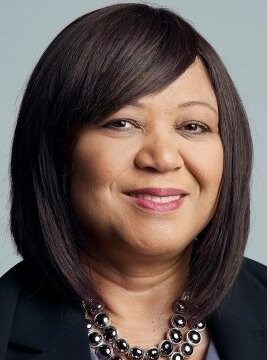 Sandra M. Clark (pictured), vice president for news and civic dialogue at WHYY in Philadelphia and former managing editor of features/operations/digital at the Philadelphia Inquirer, has been named chief executive officer of StoryCorps, effective in February, the organization announced Dec. 20. StoryCorps is “the award-winning nonprofit organization dedicated to recording, preserving, and sharing humanity’s stories.” It preserves the recordings in its archive at the American Folklife Center at the Library of Congress, the largest single collection of human voices ever gathered, and shares select stories with the public through StoryCorps’ podcast, NPR broadcasts, animated shorts, digital platforms, and best-selling books,” the organization said.
Sandra M. Clark (pictured), vice president for news and civic dialogue at WHYY in Philadelphia and former managing editor of features/operations/digital at the Philadelphia Inquirer, has been named chief executive officer of StoryCorps, effective in February, the organization announced Dec. 20. StoryCorps is “the award-winning nonprofit organization dedicated to recording, preserving, and sharing humanity’s stories.” It preserves the recordings in its archive at the American Folklife Center at the Library of Congress, the largest single collection of human voices ever gathered, and shares select stories with the public through StoryCorps’ podcast, NPR broadcasts, animated shorts, digital platforms, and best-selling books,” the organization said.
 “Mireya Villareal (pictured), west coast correspondent at CBS News, has moved to ABC News. She’ll be a correspondent based out of Dallas,” Michael Malone reported Dec. 7 for nexttv.com ” ‘Mireya is a smart and skilled journalist with roots grounded in powerful storytelling of diverse issues that impact communities of color,’ said Kim Goodwin, ABC News president and former executive VP of news at CBS News. ‘She will add instrumental value to ABC News’ coverage of this region in America, joining Marcus Moore and the team in Texas along with colleagues across the news division.’ . . . ”
“Mireya Villareal (pictured), west coast correspondent at CBS News, has moved to ABC News. She’ll be a correspondent based out of Dallas,” Michael Malone reported Dec. 7 for nexttv.com ” ‘Mireya is a smart and skilled journalist with roots grounded in powerful storytelling of diverse issues that impact communities of color,’ said Kim Goodwin, ABC News president and former executive VP of news at CBS News. ‘She will add instrumental value to ABC News’ coverage of this region in America, joining Marcus Moore and the team in Texas along with colleagues across the news division.’ . . . ”
- Laurie Ochoa, a deputy editor with the Los Angeles Times’ Entertainment and Arts team, has been elected president of CCNMA: Latino Journalists of California, Joe Rodriguez, CCNMA election coordinator end the group’s treasurer, announced Thursday on Facebook. He also wrote, “We reached our $5,000 fundraising goal for preserving CCNMA’s archives for research and posterity.”
- “Two men were arrested and a third was being sought in connection with last month’s fatal shooting of security guard and former police officer Kevin Nishita, authorities said,” George Kelly and Harry Harris reported Dec. 22, updated Dec. 23, for the Bay Area News Group. “Nishita, an employee of Star Protection Agency, was working with a news team from television station KRON on Nov. 24 when he was shot during a robbery in the 300 block of 14th Street in Oakland. He died three days later at Highland Hospital. . . . Their names were not released by police.”
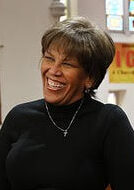 “When she first arrived in Boston a little more than 40 years ago as a rising broadcast talent hired for a job at WBZ, Liz Walker (pictured) could not have imagined the shape of her long journey in this city, or the scale of her impact as the first Black anchor of a nightly newscast, and later, as an ordained minister and humanitarian leader,” Jenna Russell reported on Christmas for the Boston Globe. She also wrote, “While Walker plans to spend time in both Boston and Sarasota, Fla., in her next phase, she stressed her ongoing commitment, at least for the next year, to continue raising money and advancing the goals of the Can We Talk Network, in hopes of reaching more trauma survivors. . . .”
“When she first arrived in Boston a little more than 40 years ago as a rising broadcast talent hired for a job at WBZ, Liz Walker (pictured) could not have imagined the shape of her long journey in this city, or the scale of her impact as the first Black anchor of a nightly newscast, and later, as an ordained minister and humanitarian leader,” Jenna Russell reported on Christmas for the Boston Globe. She also wrote, “While Walker plans to spend time in both Boston and Sarasota, Fla., in her next phase, she stressed her ongoing commitment, at least for the next year, to continue raising money and advancing the goals of the Can We Talk Network, in hopes of reaching more trauma survivors. . . .”
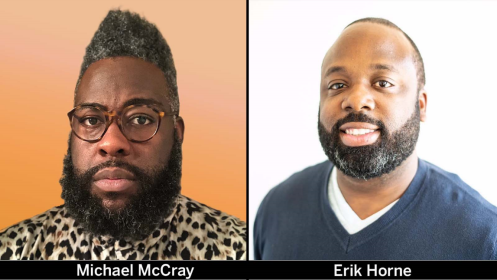 Mike McCray (pictured, left) has joined The Undefeated from The Charlotte Observer, where he worked on audience growth and retention for the North Carolina-based media outlet from 2018,” ESPN announced Dec. 23. At The Undefeated, he will be responsible for the day-to-day content on the website, editing content, and a leadership role in implementing the project’s research and analytics strategy. “McCray will report to managing editor Monique Jones. Erik Horne (pictured, right), a news editor at The Athletic in Oklahoma City for the past two years, joins The Undefeated as a senior editor for sports, reporting directly to the platform’s deputy editor for sports Ed Guzman. . . .”
Mike McCray (pictured, left) has joined The Undefeated from The Charlotte Observer, where he worked on audience growth and retention for the North Carolina-based media outlet from 2018,” ESPN announced Dec. 23. At The Undefeated, he will be responsible for the day-to-day content on the website, editing content, and a leadership role in implementing the project’s research and analytics strategy. “McCray will report to managing editor Monique Jones. Erik Horne (pictured, right), a news editor at The Athletic in Oklahoma City for the past two years, joins The Undefeated as a senior editor for sports, reporting directly to the platform’s deputy editor for sports Ed Guzman. . . .”
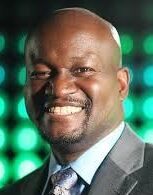 A. Sherrod Blakely (pictured), in his second term as chair of the National Association of Black Journalists Sports Task Force, is now also chair of the Diversity Committee of Associated Press Sports Editors. A multimedia journalist and NBA contributor to Bulletin.com and Bleacher Report, Blakely told APSE President Lisa Wilson that one of his biggest challenges will be “figuring out ways to amplify women, particularly Black women, in this industry.” He said, “I teach a journalism class of 15 students and 10 of them are women. To me, that’s the face of journalism going forward. We need to be at the front of that, not playing catchup like we are right now.”
A. Sherrod Blakely (pictured), in his second term as chair of the National Association of Black Journalists Sports Task Force, is now also chair of the Diversity Committee of Associated Press Sports Editors. A multimedia journalist and NBA contributor to Bulletin.com and Bleacher Report, Blakely told APSE President Lisa Wilson that one of his biggest challenges will be “figuring out ways to amplify women, particularly Black women, in this industry.” He said, “I teach a journalism class of 15 students and 10 of them are women. To me, that’s the face of journalism going forward. We need to be at the front of that, not playing catchup like we are right now.”
- The New York Amsterdam News, a Black weekly, is “adding a second Report for America (RFA) corps member to its editorial staff in 2022. This follows our selection as a RFA newsroom for the first time in 2021,” the newspaper announced Dec. 23. “This new journalist will be a community reporter with a special focus on covering public safety and AmNews readers will have a special opportunity to support their work. . . .”
- “Omar Jimenez, a CNN correspondent based in Chicago, will receive the 2021 McGill Medal for Journalistic Courage awarded by the University of Georgia Grady College of Journalism and Mass Communication,” the college announced Dec. 21. “Jimenez and his crew showed courage in their reporting mission when they were arrested during the protests following the murder of George Floyd in 2020. Over the ensuing months, he helped lead the network’s coverage in both the trial and conviction of the former officer found responsible for murdering Floyd. . . .”
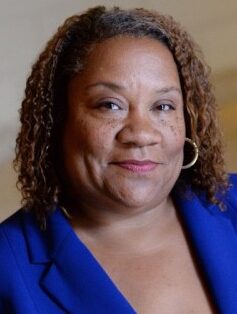 “ ‘A Journal for Jordan,’ starring Michael B. Jordan in the true story of a soldier who leaves memories behind for his young son, joined other adult-skewing dramas in the box-office doldrums with $2.2 million,” Erich Schwartzel reported Dec. 26 for the Wall Street Journal. Mark Feeney wrote Dec. 22 in the Boston Globe, “The film is based on Dana Canedy’s (pictured) best-selling 2008 memoir, ‘A Journal for Jordan: A Story of Love and Honor.’ A Pulitzer Prize-winning reporter and editor when at The New York Times, Canedy is now a senior executive at the book publishing house Simon & Schuster. The film is earnest, if also a bit slick, though not so much as to keep it from being affecting. Expect to shed a tear, or two, at its conclusion. . . .” Pamela McClintock added for The Hollywood Reporter. “Sony’s Spider-Man: No Way Home crushed it at the Christmas box office, earning $138.6 million from 4,336 theaters in North America. . . .”
“ ‘A Journal for Jordan,’ starring Michael B. Jordan in the true story of a soldier who leaves memories behind for his young son, joined other adult-skewing dramas in the box-office doldrums with $2.2 million,” Erich Schwartzel reported Dec. 26 for the Wall Street Journal. Mark Feeney wrote Dec. 22 in the Boston Globe, “The film is based on Dana Canedy’s (pictured) best-selling 2008 memoir, ‘A Journal for Jordan: A Story of Love and Honor.’ A Pulitzer Prize-winning reporter and editor when at The New York Times, Canedy is now a senior executive at the book publishing house Simon & Schuster. The film is earnest, if also a bit slick, though not so much as to keep it from being affecting. Expect to shed a tear, or two, at its conclusion. . . .” Pamela McClintock added for The Hollywood Reporter. “Sony’s Spider-Man: No Way Home crushed it at the Christmas box office, earning $138.6 million from 4,336 theaters in North America. . . .”
- “Soon after the Oklahoma Media Center (OMC) formed in 2020, the statewide news collaborative knew the Supreme Court tribal sovereignty case McGirt v. Oklahoma was an incredibly important topic . . .,” Rob Collins wrote Wednesday for Native News Online. “Our participating news orgs thought they could cover the broad subject more comprehensively by aligning resources. . . . This collaboration, called Promised Land, represents something historic.” The high court’s ruling that the Creek (Muscogee) reservation was never officially disestablished by Congress before statehood in 1907 means the state has no jurisdiction over crimes involving Native Americans in an area that includes about half of the state’s four million people, The Oklahoman has explained.
- “A survey by Reporters Without Borders (RSF) and the Afghan Independent Journalists Association (AIJA) shows a radical change in the Afghan media landscape since the Taliban took power, Reporters Without Borders wrote Dec. 20, updated Dec. 21. “A total of 231 media outlets have had to close and more than 6,400 journalists have lost their jobs since 15 August. Women journalists have been hit hardest, with four out of five no longer working. . . .” Separately, Mujib Mashal and Thomas Gibbons-Neff wrote Dec. 23 for The New York Times, “5 Desperate Days: Escaping Kabul: Baggage lost, bodies battered, more than 120 Times employees and family members barely made it to a plane out of Afghanistan after the Taliban takeover. It required an unsettling collaboration.”
- “Publishers of the Mail on Sunday have agreed to pay ‘financial remedies’ to the Duchess of Sussex, three years after she began a protracted privacy battle over a handwritten letter to her estranged father,” Mark Brown reported Dec. 26 for The Guardian. “On Sunday, the newspaper printed a statement at the bottom of its front page telling its readers that the duchess had won her legal case for copyright infringement against Associated Newspapers for articles published in the Mail on Sunday and posted on Mail Online. . . .”
- “A vocal pro-democracy website in Hong Kong shut down Wednesday after police raided its office and arrested seven current and former editors, board members and a journalist in a continuing crackdown on dissent in the semi-autonomous Chinese city,” the Associated Press reported Wednesday. . . .”The outlet was one of the last remaining openly critical voices in Hong Kong following the shuttering of the Apple Daily newspaper, which closed after its publisher, Jimmy Lai, and top editors were arrested and its assets frozen. Police raided Stand News’ office earlier in the day after arresting the six, including popular singer and activist Denise Ho, a former board member, on charges of conspiracy to publish a seditious publication. They later also arrested a seventh person, a former Apple Daily editor who is married to the arrested former Stand News editor. . . .”
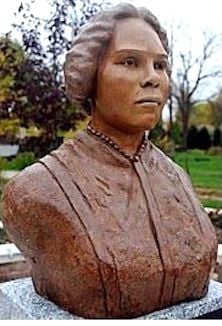 In Canada, “ A pioneering Black journalist of the 19th century is being honoured by having a National Newspaper Award named after her. The Mary Ann Shadd Cary Award for Columns will be presented for the first time when 2021 winners are announced on May 6, 2022,” the National Newspaper Awards announced Dec. 15. . . . . Born in Wilmington, Del., in 1823, Mary Ann Shadd Cary was raised by free Black parents who were active in the fight to abolish slavery. After the U.S. Congress passed the Fugitive Slave Act, bolstering slave owners’ ability to recapture formerly enslaved individuals, she relocated to southwestern Ontario in the early 1850s, and began working to provide education and support to the growing population of freedom seekers. Three years later, she founded the Provincial Freeman, a newspaper advocating the abolition of slavery and full freedom for those who had been enslaved. . . . (Photo: Mary Ann Shadd Cary Statue at BME Freedom Park, Chatham, Ontario)
In Canada, “ A pioneering Black journalist of the 19th century is being honoured by having a National Newspaper Award named after her. The Mary Ann Shadd Cary Award for Columns will be presented for the first time when 2021 winners are announced on May 6, 2022,” the National Newspaper Awards announced Dec. 15. . . . . Born in Wilmington, Del., in 1823, Mary Ann Shadd Cary was raised by free Black parents who were active in the fight to abolish slavery. After the U.S. Congress passed the Fugitive Slave Act, bolstering slave owners’ ability to recapture formerly enslaved individuals, she relocated to southwestern Ontario in the early 1850s, and began working to provide education and support to the growing population of freedom seekers. Three years later, she founded the Provincial Freeman, a newspaper advocating the abolition of slavery and full freedom for those who had been enslaved. . . . (Photo: Mary Ann Shadd Cary Statue at BME Freedom Park, Chatham, Ontario)
- “This has been quite a year for Palestine. What started as one neighborhood’s rallying cry against dispossession translated into a unity uprising that situated the Palestinian cause at the center of the international news cycle,” Mohammed El-Kurd wrote Wednesday for The Nation. “For a brief yet unprecedented moment, decades-old Palestinian analysis about Israeli settler-colonialism triggered worldwide epiphanies and gave language to the usual out-of-context photographs of weeping Palestinian mothers and razed buildings. . . . But once the bombing appeared to pause, camera crews gathered their equipment and moved on to a different story. . . .”
- “Three key things proved useful in helping interrupt the cycle of Covid-19 misinformation and to stem the tide of anti-vaccine rhetoric among less connected communities in Kenya,” Alphonce Shiundu, Kenya editor of the nonpartisan organization AfricaCheck, wrote Dec. 20. The three: “Unverified information gets on air and is amplified as part of call-in shows,” “People want to hear from experts in a language they understand,” and “We are fact-checkers, not experts.” Overall, Shiundu wrote, “The main platforms for false information have included Facebook, Twitter, YouTube and Instagram.”
- “Thirty per cent of the top accolades at this year’s Uganda National Journalism Awards were earned for coverage of the most pressing issue of the past two years – the COVID-19 pandemic,” the Independent in Kampala, Uganda, reported Dec. 21. In addition, Solomon Serwanjja and Joshua Mujjunga of NBS TV took the top prize in the Investigative Reporting category. The reported “how Members of Parliament allocated themselves billions of shillings that had not been budgeted for purportedly to help in the fight to control COVID-19.”
- In Argentina, a group of unidentified people gathered at the headquarters of the El Chubut newspaper in the city of Trelew, in the southern province of Chubut, and threw rocks and firebombs into the building, breaking windows and setting several fires, the Committee to Protect Journalists reported Dec. 23. The attackers entered the building, which also houses the outlet’s radio station, and ransacked it for several hours, damaging and stealing equipment and archival materials, , El Chubut section chief Rubén Darío Giménez told CPJ. Journalists and staff were evacuated by police, and no one was injured, Giménez said. The attack took place amid protests against a new mining zoning ordinance. At least 16 buildings were set afire or damaged.
To subscribe at no cost, please send an email to journal-isms+subscribe@groups.io and say who you are.
Facebook users: “Like” “Richard Prince’s Journal-isms” on Facebook.
Follow Richard Prince on Twitter @princeeditor
Richard Prince’s Journal-isms originates from Washington. It began in print before most of us knew what the internet was, and it would like to be referred to as a “column.” Any views expressed in the column are those of the person or organization quoted and not those of any other entity. Send tips, comments and concerns to Richard Prince at journal-isms+owner@
View previous columns (after Feb. 13, 2016).
View previous columns (before Feb. 13, 2016)
- Diversity’s Greatest Hits, 2018 (Jan. 4, 2019)
- Book Notes: Is Taking a Knee Really All That? (Dec. 20, 2018)
- Book Notes: Challenging ’45’ and Proudly Telling the Story (Dec. 18, 2018)
- Book Notes: Get Down With the Legends! (Dec. 11, 2018)
- Journalist Richard Prince w/Joe Madison (Sirius XM, April 18, 2018) (podcast)
- Richard Prince (journalist) (Wikipedia entry)
- February 2018 Podcast: Richard “Dick” Prince on the need for newsroom diversity (Gabriel Greschler, Student Press Law Center, Feb. 26, 2018)
- Diversity’s Greatest Hits, 2017 — Where Will They Take Us in the Year Ahead?
- Book Notes: Best Sellers, Uncovered Treasures, Overlooked History (Dec. 19, 2017)
- An advocate for diversity in the media is still pressing for representation, (Courtland Milloy, Washington Post, Nov. 28, 2017)
- Morgan Global Journalism Review: Journal-isms Journeys On (Aug. 31, 2017)
- Diversity’s Greatest Hits, 2016
- Book Notes: 16 Writers Dish About ‘Chelle,’ the First Lady
- Book Notes: From Coretta to Barack, and in Search of the Godfather
- Journal-isms’ Richard Prince Wants Your Ideas (FishbowlDC, Feb. 26, 2016)
- “JOURNAL-ISMS” IS LATEST TO BEAR BRUNT OF INDUSTRY’S ECONOMIC WOES (Feb. 19, 2016)
- Richard Prince with Charlayne Hunter-Gault, “PBS NewsHour,” “What stagnant diversity means for America’s newsrooms” (Dec. 15, 2015)
- Book Notes: Journalists Follow Their Passions
- Book Notes: Journalists Who Rocked Their World
- Book Notes: Hands Up! Read This!
- Book Notes: New Cosby Bio Looks Like a Best-Seller
- Journo-diversity advocate turns attention to Ezra Klein project (Erik Wemple, Washington Post, March 5, 2014)
When you shop @AmazonSmile, Amazon will make a donation to Journal-Isms Inc. https://t.co/OFkE3Gu0eK
— Richard Prince (@princeeditor) March 16, 2018

